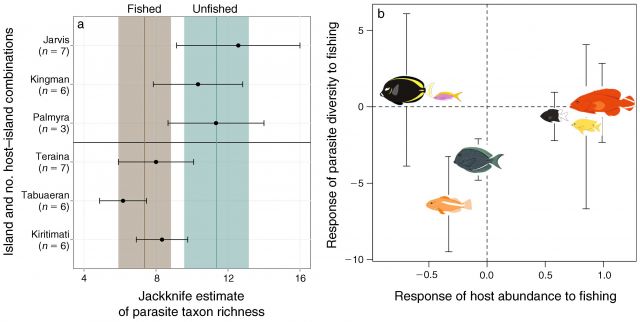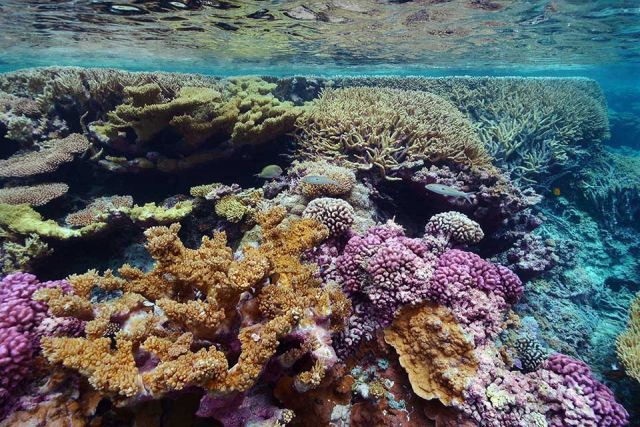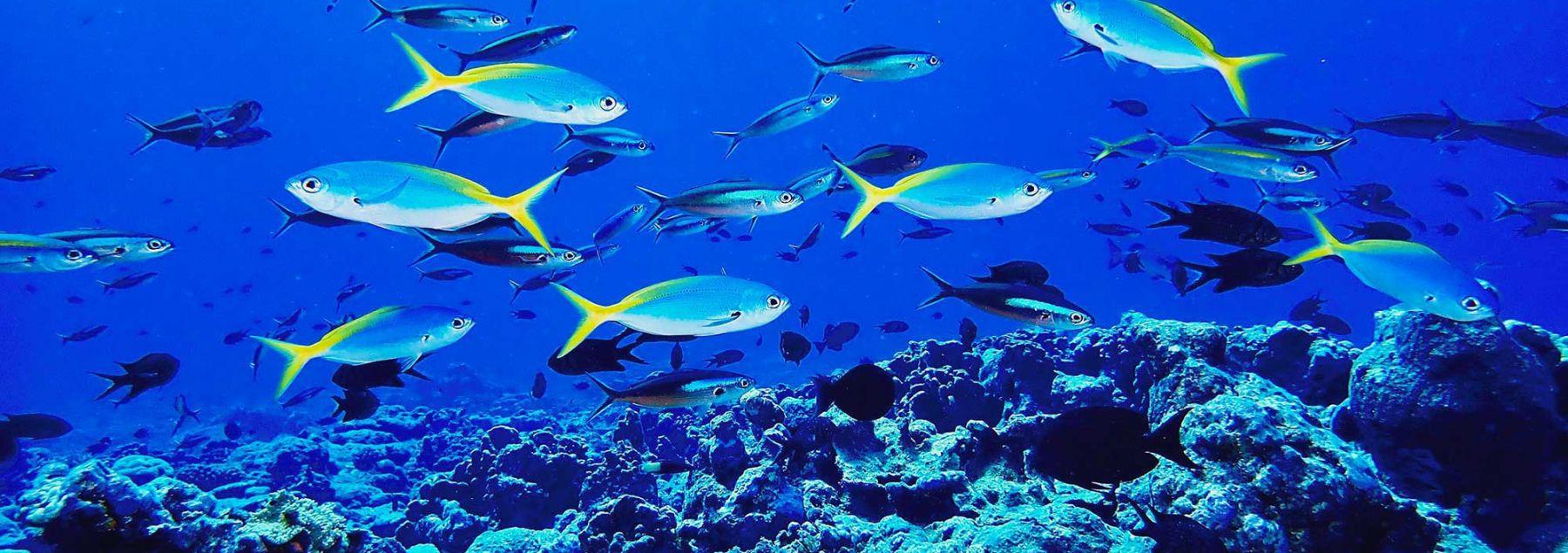Biodiversity research at Palmyra involves characterizing the compositions, distribution, and interactions of marine biodiversity. Our research includes comprehensive biological surveys along with biophysical, biogeochemical, and ecological analyses designed to understand the importance of organisms - ranging from microbes to top predators - to ecosystem function.
Research Highlights

The food web for the sand flats at Palmyra Atoll
Palmyra researchers recently completed a complete food web for the extensive sand flat habitats at Palmyra Atoll. Arguably the most complete food-web ever created, it consists of 195 free-living species across 18 phyla, and 389 separate life stages. What makes this study unique is the comprehensive inclusion of parasite diversity within the food web, consisting of 80 species across 9 phyla, and 281 separate life stages. Stay tuned here for the publication of these results.

Fishing drives declines in fish parasite diversity and has variable effects on parasite abundance
Researchers showed that parasite diversity at fished islands was significantly depressed compared with unfished islands like Palmyra. They hypothesized that this is due to the fact that many parasite species rely on being trophically transferred up the food web to multiple hosts. High trophic groups are often the first fish species to be depleted on fished reefs, potentially eliminating final hosts for some parasite species.

Characterization of the coral communities at Palmyra Atoll in the remote Central Pacific Ocean
Researchers conducted comprehensive surveys of the coral biodiversity at Palmyra Atoll in 2007 and documented 84 coral species/morphological groups representing 31 genera. They found significant variation in coral community composition between forereef and backreef habitats and between sites within each habitat. These data serve as an important baseline with which to measure future changes on Palmyra's reefs.
